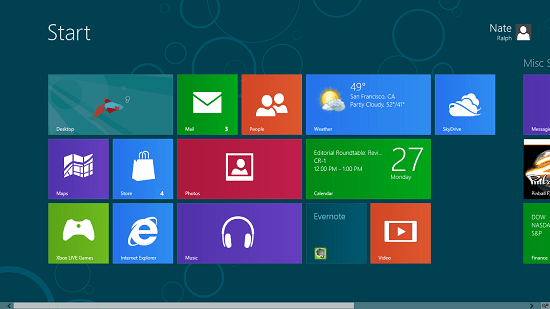SAN FRANCISCO – The one bad thing about sustained market dominance is that you’ll have to constantly deal with the wants and needs of too many customers. And, those customers may not have the same futuristic ideas as you do.
This is in essence Microsoft’s biggest challenge going forward. The company is making all the right moves with its touch experience and services play in the market. Microsoft CEO Steve Ballmer said he has committed the company to a rapid-release product strategy. Microsoft has to do this to aggressively compete with the cloud providers such as Amazon Web Services and Google. But, its legacy on-premise customers still want their software solutions a certain way. And, Microsoft is obligated to accommodate them.
Sure there is a big sales push on by Ballmer and Windows chief Julie Larson-Green to get the channel to encourage customers to adopt a touch experience and cloud services environment.
But customers, and Microsoft still has a billion of them, are moving too slowly in this direction.
Rob Sanfilippo, research vice president of Directions on Microsoft, told CDN that this problem will be the company’s biggest challenge.
“Most Windows users are desktop or notebook users and there are a lot of them out there; over a billion. Touch has been driven by new devices from Apple and Android. Bringing Windows users to that world will take time and they can’t do it in one release,” he said.
A lot of the new features in Windows 8.1 were consumer focused, he added and while there are some successes here and there Sanfilippo does not see the big adoption curve yet in the enterprise.
“I’ve been waiting to see more on the enterprise but I did not hear enough from Ballmer on how 8.1 fits into the enterprise,” he said.
For Sanfilippo it’s going to take Microsoft some time to get where it wants to be. They question is does Microsoft have enough time.
This week’s partnership announcement with Oracle for example speaks of two companies getting pushed by the cloud providers. And, working together may solve some market issues, but it will not solve all of them for Microsoft or Oracle.
Sanfilippo has learned that Microsoft enterprise solutions developed for the modern user interface is under 20 per cent. Most of those are still with the old desktop user interface.
Going to a services strategy is wise since that line of business managers will now have the freedom to choose cloud apps and bypass the CIO.
Sanfilippo said that Microsoft is trying to re-invent themselves with services and the rapid release strategy is a good one as it helps the company compete with the cloud services players. But the challenge still remains to keep new versions in sync with those on the cloud and those old customers who still want their solutions on-premise.





